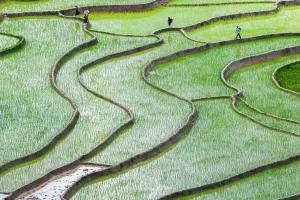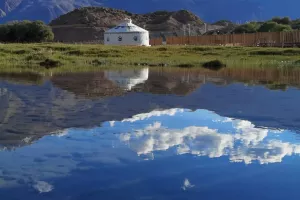The allure of islands lies in their inherent mystery and desirability, attracting the attention of many through numerous literary works that conjure tales of enchanting and enigmatic lands.
Indeed, these islands, encircled by the vast expanse of the sea, owe their mystique to their unique geographical environments.
The formation of islands is primarily attributed to the dynamic forces of crustal movements, gradually transforming landmasses into distinct entities surrounded by the vast expanse of the sea.
With over 50,000 islands scattered across the globe, encompassing nearly 10 million square kilometers of land, each island boasts its own distinctive characteristics, beckoning explorers to unravel their secrets.
Today, let's explore the six largest islands in the world.
1. Greenland
The largest island in the world is Greenland, covering an area of 2,130,800 sq km. Greenland is located at the junction of North America and Europe, and it communicates the Arctic Ocean and Atlantic Ocean.
It is more than 1 million square kilometers larger than the world's second-largest islands. The area of Greenland can be ranked in the top 15 large regions in the world, exceeding the territorial area of most countries.
It was reported on December 7, 2018, that Greenland island's glaciers have melted at unprecedented speeds in decades. If the glaciers of Greenland are melted, the global sea level will rise.
2. New Guinea
Following closely behind is New Guinea, encompassing 785,753 square kilometers of landmass. Nestled within the Oceania region, New Guinea is shared between Indonesia and Papua New Guinea. Renowned for its rich biodiversity, New Guinea hosts a diverse array of flora and fauna, bridging the biogeographical divide between Asia and Australia.
3. Borneo
Borneo Island occupies the third spot, covering approximately 743,000 square kilometers and situated amidst the Malay Archipelago. Unlike conventional territories, Borneo is jointly administered by Malaysia, Indonesia, and Brunei, boasting a storied history and cultural heritage.
4. Madagascar Island
Madagascar Island, part of the eponymous country, ranks fourth, with an expansive area of 587,713 sq km. Positioned as the largest island in the Indian Ocean, Madagascar teems with biodiversity, harboring a multitude of unique plant and animal species within its tropical rainforest climate.
5. Baffin Island
Canada's Baffin Island secures the fifth position, emerging as not only the fifth-largest island globally but also the largest within Canadian borders. Characterized by its frigid climate and Arctic surroundings, Baffin Island sustains a resilient population, primarily reliant on fishing for sustenance.
6. Sumatra
Rounding out the list is Sumatra Island, the third largest within Indonesia, celebrated historically for its abundant gold reserves. Often referred to as the "Golden Island," Sumatra's natural wealth has inspired tales of treasure and adventure, echoing through the corridors of film and literature.
As these six colossal islands continue to intrigue and inspire, they are a testament to the enduring allure of Earth's diverse landscapes, beckoning travelers to embark on journeys of discovery and exploration.


